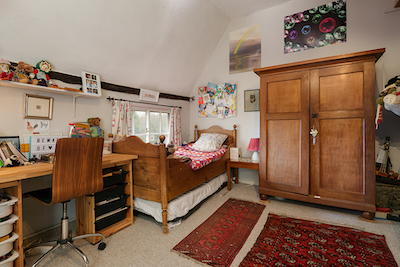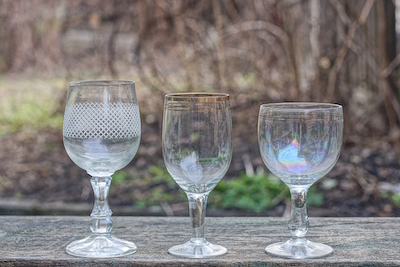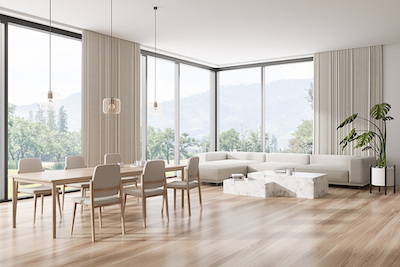When it comes to choosing furniture for your home, one of the biggest decisions you’ll have to make is whether to go for a veneer finish or real wood. While both options have their pros and cons, it’s important to understand the differences so you can make an informed decision that best fits your needs and budget.
What is a Veneer Finish?
A veneer finish is a thin layer of wood, usually around 1/16 inch thick, that is glued onto the surface of a piece of furniture (usually fibreboard that is used as a substrate). The veneer can be made from a variety of different wood species, including oak, cherry, and maple, and it’s often used to create intricate patterns or designs on furniture.
One of the main benefits of a veneer finish is that it’s typically less expensive than real wood furniture. This is because veneer is made from a thin layer of wood that can be sliced or peeled from a log, which means manufacturers can produce more veneer from a single tree than they could if they were using solid wood.
Another benefit of a veneer finish is that it’s more durable than solid wood furniture. This is because veneer is less likely to warp or crack over time, since it’s less susceptible to changes in temperature and humidity. Additionally, a veneer finish is less prone to scratching and other types of damage, which makes it a great choice for families with young children or pets.
However, one of the main drawbacks of a veneer finish is that it can look less authentic than real wood furniture. This is because the thin layer of wood can sometimes appear “flat” or “fake,” especially when compared to the natural grain patterns and textures of solid wood. Additionally, a veneer finish can be difficult to repair if it gets damaged, since it’s not always easy to match the color and grain pattern of the existing veneer.
What is Real Wood Furniture?
Real wood furniture, as the name suggests, is made from solid pieces of wood. This means that the entire piece of furniture is made from a single piece of wood, rather than a veneer that’s glued onto a substrate.
One of the main benefits of real wood furniture is that it looks and feels more authentic than a veneer finish. This is because the natural grain patterns and textures of the wood are more visible and pronounced, which gives the furniture a warm and inviting look. Additionally, real wood furniture is often considered to be a higher-end option, since it requires more time and skill to produce than a veneer finish.
Another benefit of real wood furniture is that it can be customized to fit your exact specifications. This means that you can choose the type of wood, the finish, and even the size and shape of the furniture to best fit your needs and preferences.
However, one of the main drawbacks of real wood furniture is that it can be more expensive than a veneer finish. This is because the production process is more time-consuming and labor-intensive, since the wood needs to be carefully selected, cut, and joined to create the final product. Additionally, real wood furniture is more susceptible to warping and cracking over time, especially if it’s exposed to changes in temperature and humidity.
Which Option is Best for You?
Choosing between a veneer finish and real wood furniture ultimately comes down to your personal preferences and budget. If you’re looking for a more affordable option that’s durable and easy to maintain, a veneer finish might be the best choice for you. On the other hand, if you’re willing to invest in a higher-end option that’s more authentic and customizable, real wood furniture might be a better fit.
It’s also worth considering the style and aesthetic of your home when choosing between a veneer finish and real wood furniture. If you have a more modern or minimalist style, a veneer finish might fit in better with your décor, while a traditional or rustic home might benefit from the warmth and natural beauty of real wood furniture.
Additionally, it’s important to consider the intended use of the furniture when making your decision. If you’re looking for furniture that will be used frequently, such as a dining table or coffee table, a veneer finish might be a better choice since it’s more durable and less prone to damage. However, if you’re looking for a piece of furniture that will be more decorative than functional, such as a bookshelf or accent table, real wood furniture might be a better fit since it offers a more authentic and luxurious look.
In the end, choosing between a veneer finish and real wood furniture requires careful consideration of your personal preferences, budget, and intended use. While both options have their benefits and drawbacks, the choice ultimately comes down to what works best for you and your home.
If you do decide to go with a veneer finish, it’s important to choose a high-quality product that’s made with care and attention to detail. Look for furniture that uses a thick and durable veneer layer, and avoid products that use cheap or thin veneers that are more likely to peel or chip over time.
Similarly, if you choose real wood furniture, it’s important to select a high-quality product that’s made from solid pieces of wood and built to last. Look for furniture that uses high-quality joinery and finishes, and avoid products that use low-quality materials or shortcuts in the production process.
In the end, the decision to choose between a veneer finish and real wood furniture ultimately depends on your personal preferences, budget, and intended use. While both options have their pros and cons, it’s important to choose a high-quality product that’s built to last and fits in with the overall style and aesthetic of your home. Whether you go with a veneer finish or real wood furniture, taking the time to make an informed decision will ensure that you’re happy with your purchase for years to come.














